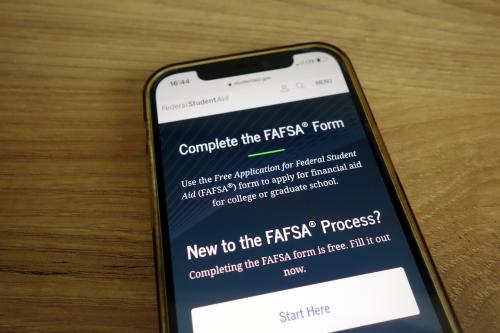
Each year on October 1, the Free Application for Federal Student Aid ("FAFSA") becomes available for the next academic year. High school seniors and college students continuing into Academic Year 2022-23 will need to file a new form (the 2022-2023 FAFSA that became available 10/1/2021) to be or continue to be eligible for financial aid.
FAFSA allows students to participate in federal student aid programs, including the Direct Student Loan Program, the Pell Grant Program, and Work-Study, to name a few. Without filing, students will not be eligible for these programs.
Remember, the federal government and the colleges are dealing with students, not parents, in this process. Be sure that filings are done using the student's information, including their social security number.
Here are the three websites to help you better understand the FAFSA and the filing process:
- General information at Federal Student Aid
- Create a FAFSA ID
- File the FAFSA
The U.S. Department of Education also has a mobile App for the FAFSA called myStudentAid.
Family income is a key factor in determining eligibility for federal financial aid. The FAFSA form requires information from a family's tax returns that were filed two years before the Academic Year for which a student is seeking federal financial aid. Students filing for financial aid for the next Academic Year (2022-23) must use tax information from the tax year 2020. To make this easier, the Department of Education has a link to those tax forms via the IRS Data Retrieval Tool.
The FAFSA collects information about various aspects of a family's situation including, but not limited to, their income and number of students attending college to calculate the family's Expected Family Contribution ("EFC") using a formula established by law. Most undergraduates are dependent students for this purpose and are required to report their parent's income in addition to their own. If parents are separated or divorced, the custodial parent must provide their income data for FAFSA filing purposes. Use this free tool to estimate your family's Expected Family Contribution.
Once the FAFSA is filed, the student will receive a Student Aid Report (SAR), which will also be sent to colleges. The SAR will note the EFC. If the EFC seems high, be sure to double-check inputs to be sure that there aren't any errors. If errors are uncovered, be sure to correct them immediately and let the college know of the error.
Based on the SAR, the federal government determines financial needs and allocates grants to students with financial needs. Colleges also use the SAR to award their own need-based grants and scholarships.
Some private colleges and universities also require students to file a second financial aid form known as the CSS/Profile. For a fee, the College Board administers this process for colleges and universities. Like the FAFSA, the CSS is available on October 1 and helps to determine a student's eligibility for institutional financial need.
One final note: some colleges require the FAFSA and CSS Profile to be filed at about the same time that Early Decision or Early Action applications are due. Be sure you know the appropriate deadlines well in advance. Missing financial aid deadlines will likely result in a student not being considered for aid.
